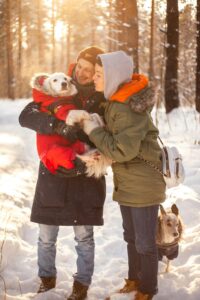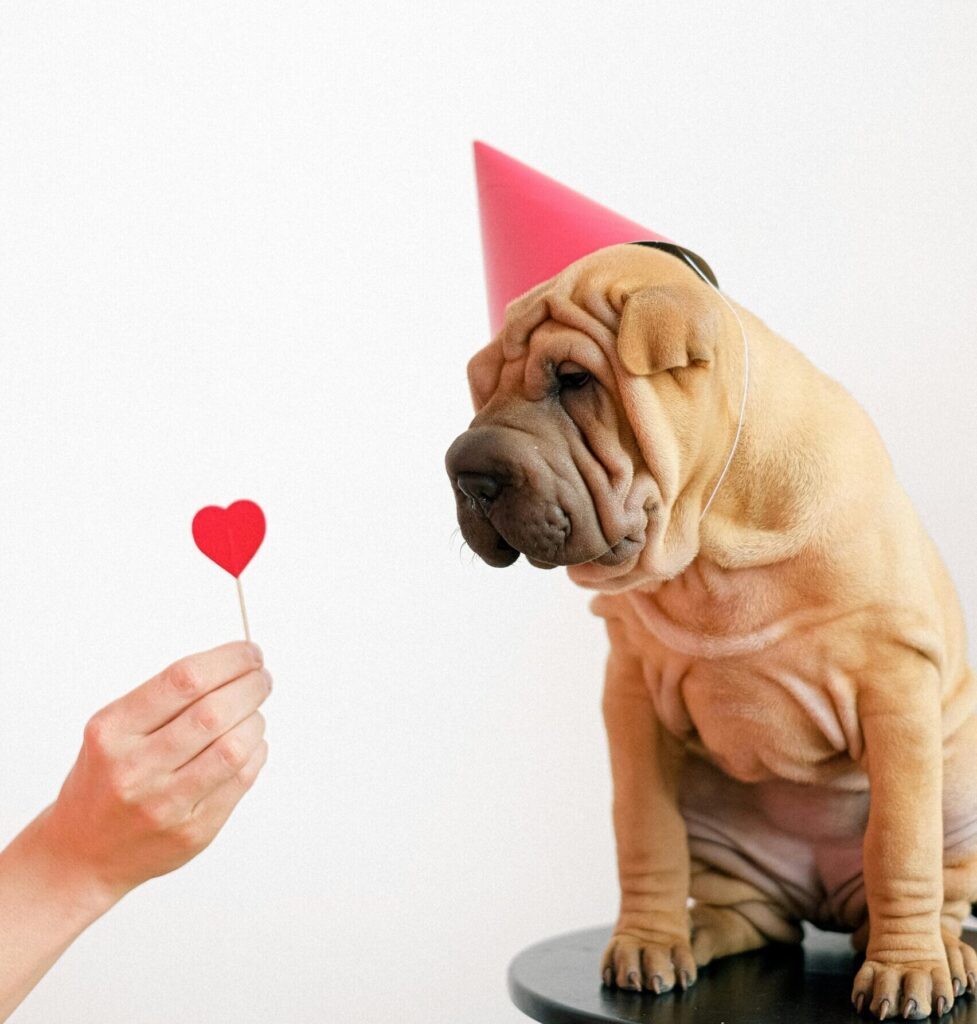1-Tips to keep your dog safe
Some dogs are naturals in the cold weather, whereas some will need a bit more love and care to keep them comfortable. There are several things to consider when walking dogs in cold weather, so how can you keep your best four legged friend happy this winter?
- Bedding
- Protect your dog’s paws
- Dog coats, Blanket
- Provide adequate shelter
- Protect against hypothermia
- Avoid space heaters and fireplaces
- Keep active, dry
- Limit dog’s time outside
2- Sizes and breeds that tolerate the cold best
There are some types of dogs that can handle the cold season much better than others. For example,
- Dogs with undercoats
- Dogs with long hair
- Medium to large sized dogs
The breeds that are best suited to the winter season :
- Mountain dogs: St. Bernard, Tibetan Mastiff, Pyrenean
- Nordic dogs: the Husky, the Alaskan Malamute, the Buhund, the Newfoundland, the Finnish Spitz, the Finnish Lapphund, the Keeshond, the Samoyed.
- Guard dogs: the Caucasian Shepherd, the Maremma Sheepdog, the Anatolian Shepherd, the Bernese Mountain Dog.
- Wolfdogs: Czechoslovakian Wolfdog, German Shepherd.
- Other breeds: the Hakita Inu, the Chow chow, the Labrador, the Sulimov Dog, the Shih Tzu.
3- Condsider investing in winter clothing and accessories
A lot of larger or longer coated breeds have no issues with braving the cold, and it is usually fairly clear that they are perfectly happy using their own insulation to stay warm when outside. However, some smaller or short coated dogs feel cold in the winter nip, so it may be a good idea to buy a well fitting coat that will help keep them warm and dry on walks.
The dark mornings and evenings mean that you’ll most likely be taking your dog out for a walk when it is dark or gloomy, and you should think about how visible your dog is to other people when out walking in low light. Reflective collars and jackets are a good idea, and there are even some bright LED collars and tags available to help make your dog easier to see by other walkers and road users.
You should also consider the clothing that you wear on dark dog walks, as anything that will help make you more visible will keep both you and your dog safer. Hi-vis jackets will make you easy to spot in lower light levels, and taking a torch will help you see better, and will make you easier to see by others.
4- Beware of potential dangers on walks
- Hidden Dangers in Snowy Conditions
A thick blanket of snow can hide a lot of potentially dangerous areas which may cause harm to your dog if they are off lead. Any deep snow drifts will look almost invisible, and your dog could very easily end up in difficulty by walking into snow that is far too deep. - Risks of Frozen Water Bodies
Ponds, lakes, and streams can freeze over and may look solid, but the thin ice layer can cover deep and potentially fatal freezing water. Your dog can very easily fall through the ice and get into difficulty, and you would put yourself in serious danger by trying to rescue them. - Safety Measures in Freezing Weather
For both of these reasons, it is a good idea to keep your dog on the lead while out on walks in the freezing weather. It may be frustrating for your dog if they are used to being walked off lead, but in the long run, it is better to play it safe and keep them out of harm’s way. - Visibility and Safety During Dark Evenings
As the nights draw in and evenings get darker earlier, remember to keep you and your dog safe by wearing reflective clothing and using bright or reflective collars or light-up leads. Road traffic accidents are common in the winter, and there are a number of steps you can take to make you and your dog more visible at night. Check to make sure that your dog is microchipped and that they are wearing ID tags in case they get lost after dark.
5- Clean up and warm up when you get home
- Walking on Roads, Pavements, or Paths
“If your usual walking route involves walking on roads, pavements, or paths, then there is a good chance that salt has been spread on them to melt any ice and reduce the risk of anyone slipping and hurting themselves. If your walk involves any of these surfaces then you should rinse your dog’s paws with warm water when you get home, as the salt can cause skin irritation. - Snowballs on Fur
“Some dogs with longer coats may collect snowballs on their fur as they play and roll in the snow. If this happens to your dog, try your best to dust them off as they collect on your walk, but failing that rinse them off with warm water when you get home to melt them away.” - Keeping Your Dog Warm After the Walk
“After a period of running around in the cold, your dog may initially be quite warm and panting but as soon as you get home and they cool down they can get chilly very quickly. Make sure your dog has a cosy dry space to stay warm when they get home, and if they are damp or wet check to make sure they aren’t getting too chilled as they dry off. A warm towel to lay on or a specialist moisture-wicking drying coat are ideal for this.”
6- Winter dangers to dogs
Some dogs are naturals in the cold weather, whereas some will need a bit more love and care to keep them comfortable. Winter is dangers for them that causes following problems
- Antifreeze
- Hypothermia
- Frostbite
- Arthritis
- Rat and mouse poison
- Winter weight gain
Antifreeze – can be extremely dangerous to dogs. It can damage their kidneys and cause death, even after only a small amount has been licked. It smells and tastes sweet, so may be irresistible to some dogs. Dogs will most often come across it after it’s leaked from a car radiator, or been spilt after refilling screen wash. If you notice any liquids by your car, keep your dog away and clean it up immediately. If they’ve walked through any, then wash their paws with soap and water straight away. If you think your dog has licked, drank or been in contact with antifreeze, contact your vet immediately. The quicker your dog is treated the better.
Hypothermia -In very cold weather, if you’re out for a walk with your dog, it’s important that you keep a close eye on their paws. Ice and snow can stick to the fur between their pads and ball-up. Not only could this be uncomfortable for your dog, but it also increases their risk of frostbite. If your dog lifts their paws, stops walking or whines it could be a sign that their paws are too cold. When cold, a dog’s body limits blood flow to their extremities (paws, tail, ears etc.) and instead, uses it to keep their vital organs safe and warm. This protects the organs, but does put these extremities at risk of being damaged by the cold. On very cold, icy or snowy days, try to keep the time they spend outside to a minimum and consider using a coat or paw protectors to keep them warm. If you’re concerned about them having frostbite contact your vet immediately.







